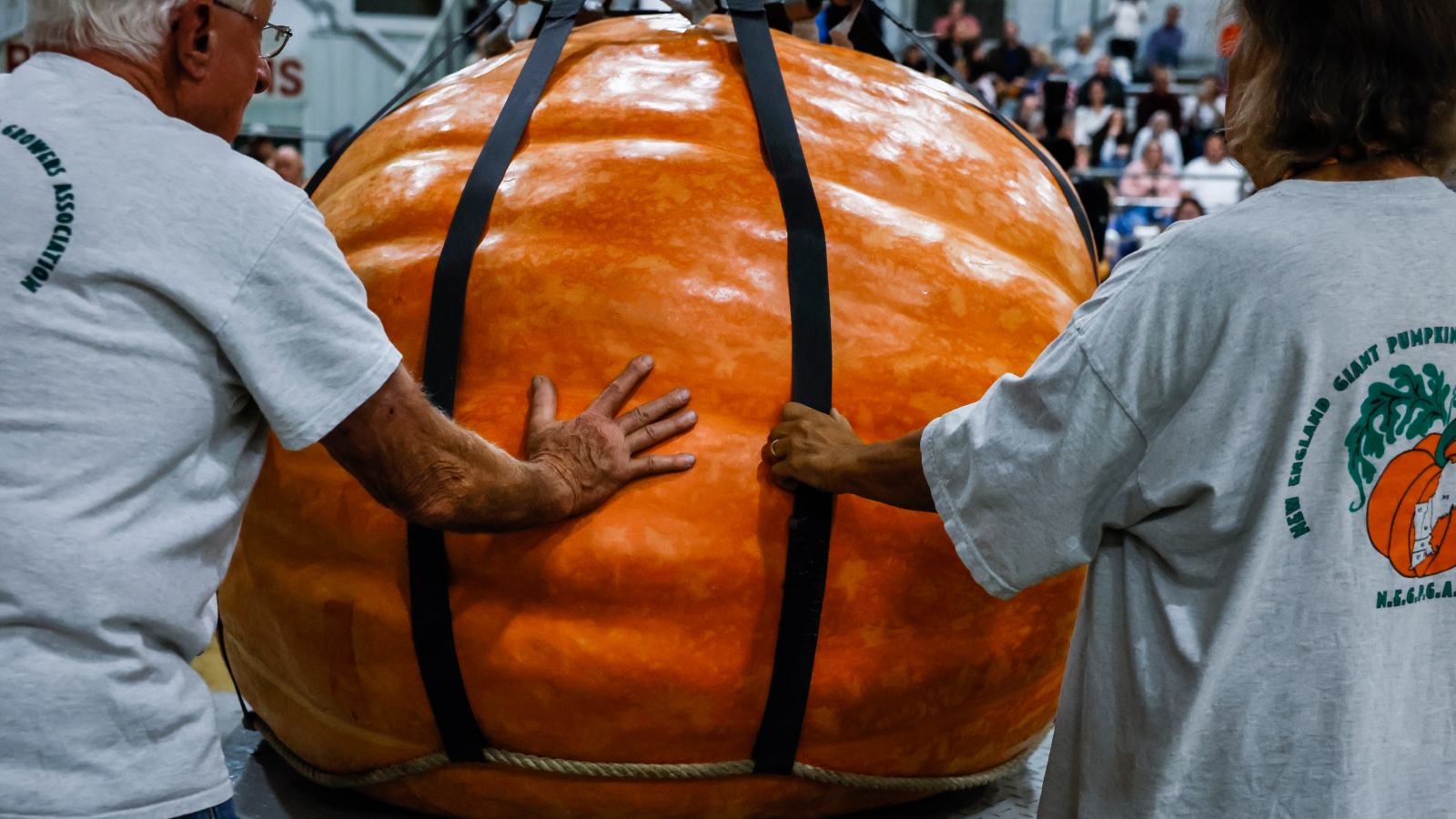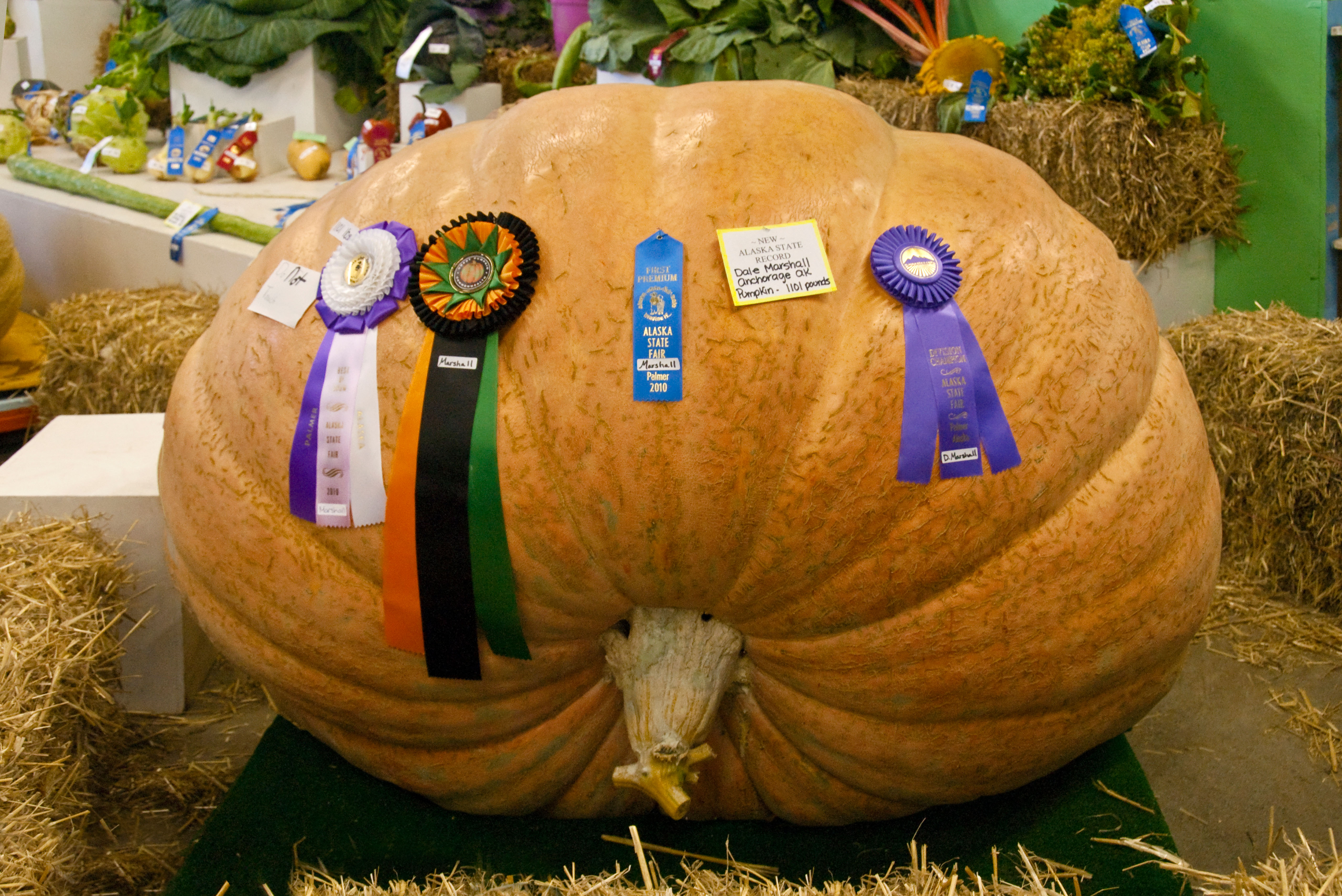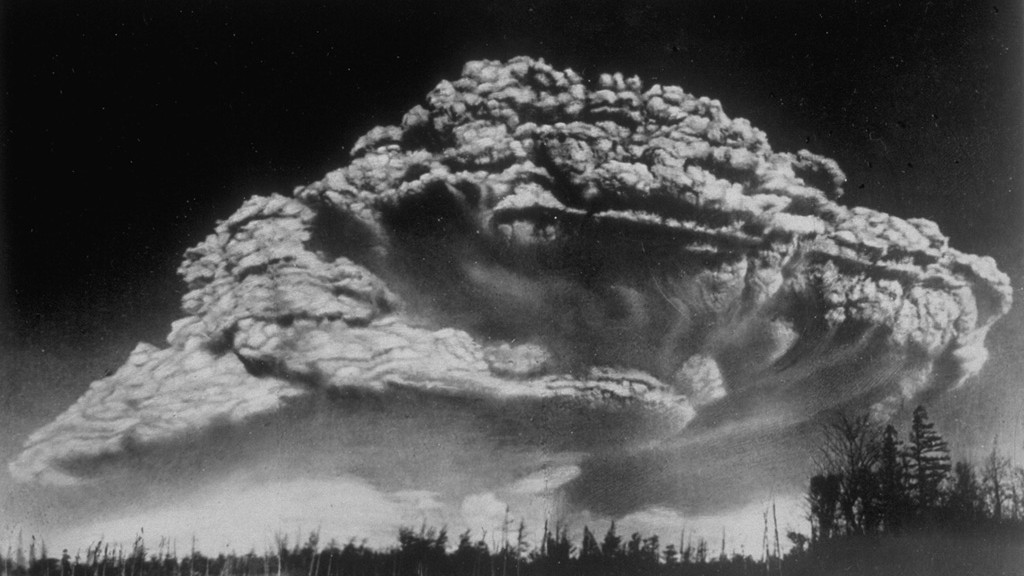Why can pumpkins grow so large, but blueberries can't?
Most fruit is pretty small, so why do pumpkins grow to such enormous sizes?

Every fall, pumpkin growers haul their record-breaking giants onto scales, with some pumpkins weighing more than 2,700 pounds (1,225 kilograms). Yet the world's largest apple barely reaches 4 pounds (1.8 kg), and the heaviest blueberry ever grown weighs less than an ounce (28 grams). So what allows pumpkins to grow to such staggering sizes while other fruits (yes, pumpkins are fruits and even a type of berry) remain comparatively tiny?
Giant pumpkins are a specific variety of Cucurbita maxima that's been bred to grow huge — most often Mammoth and Atlantic Giant varieties. A basic reason they can grow so large is that they're indeterminate plants, Vikram Baliga, an assistant professor of practice of horticulture at Texas Tech University, told Live Science. Whereas determinate plants reach a set size and then stop, indeterminate plants grow indefinitely.
"So you'll see these big, sprawling pumpkin plants that take over your entire yard, and sometimes it's just one plant," Baliga said.
Determinate plants tend to produce all their fruit at once, which has benefits for harvesting but limits how large they can grow.

Sign up for our weekly Life's Little Mysteries newsletter to get the latest mysteries before they appear online.
"Some plants, when they grow an organ — whether it's a leaf, whether it's a fruit, whether it's a flower — they have a program that limits how big that particular thing they grow will be," Jessica Savage, an associate professor in the Swenson College of Science and Engineering at the University of Minnesota Duluth, told Live Science. "Other species don't have that kind of limit. … For some reason, the pumpkins don't seem to have a really strong one that limits their size, and so that allows us to breed for bigger ones."
With nothing to limit their growth potential, pumpkin plants can continuously add more leaves to generate energy for their fruit.
"With an indeterminate plant, its goal is to produce as much biomass as it can, as quickly as possible, so your pumpkin is going to put on leaves and stems and all kinds of stuff," Baliga said. "Then, if it needs to produce more energy, it just grows more leaves. It doesn't have that genetic choke point."
How to grow a giant pumpkin
Growers take advantage of this by removing all but one pumpkin from the vine.
"If you've got this plant that's able to bank all these resources and you pull eight pumpkins off the plant and just leave one, it's like 'Great, I'm just going to divert it all into this one fruit. This is my only chance to carry on my genetics,'" Baliga explained.
Technically, this trick also works with other fruits. Removing all but one peach from a tree, for example, can produce a larger peach. But that's where the laws of physics come into play.
For one thing, pumpkins grow on the ground, so they're less subject to the pull of gravity; a giant peach would not be able to grow as large as a pumpkin because it would fall off the tree long before it reached that weight.
In addition, a pumpkin's hard rind allows it to grow larger than a fruit with soft skin. "You wouldn't be able to get a really big fruit on something that's really soft because it would start to weigh itself down and it would start to break," Savage said.

However, a rind that's too stiff won't allow the pumpkin to grow to a massive size. "The people who grow pumpkins work to get that sweet spot — you don't want them so stiff that they can't expand. … If the skin splits, it's not competitive. So you have to have the skin soft enough, but it has to be strong enough that it can support its own weight."
When they're young, giant pumpkins have soft, thin skin that allows them to grow rapidly. As they mature, the skin hardens, Savage said. Growers protect pumpkins from the sun by covering them with a tarp to keep them in that soft, rapid growth phase as long as possible.
At peak growth, giant pumpkins can pack on 44 pounds (20 kg) a day — and all that mass has to move through the fruit's vascular system, which Savage said is "superpowered." Savage and her team have found that, compared with other pumpkin varieties, giant pumpkins have more phloem, which is the part of the vascular system that transports sugar.
"I often think about it like a highway," she said. "You can move the same amount on a small highway, but you're limited by how fast it happens. If you want to move a lot more resources more rapidly … you have to have more roads."

Giant pumpkins also have a lot of time to grow. "A pumpkin stays on the vine for months … they're like a five- to six-month crop, 180 days in some cases," Baliga said. "Whereas your apples, your peaches, your pears, a lot of your blueberries, they tend to be much quicker from flower to harvest."
But an equally important reason giant pumpkins get so big is that we made them that way. "They've been selectively bred for a really long time, just for size, which is different than a lot of other foods where we're also selecting them for taste," Savage said.
Pumpkins are a symbol of fall and central to Halloween and Thanksgiving traditions, so they hold a more prominent place in our culture than other fruits with similar growth potential, like cucumbers.
For her part, Savage thinks pumpkins will keep getting bigger. "There probably is eventually a limit, but I think we'll keep finding ways to push it," she said.
Fruits and vegetables quiz: Do you know where pumpkins, blueberries and broccoli come from?

Ashley Hamer is a contributing writer for Live Science who has written about everything from space and quantum physics to health and psychology. She's the host of the podcast Taboo Science and the former host of Curiosity Daily from Discovery. She has also written for the YouTube channels SciShow and It's Okay to Be Smart. With a master's degree in jazz saxophone from the University of North Texas, Ashley has an unconventional background that gives her science writing a unique perspective and an outsider's point of view.
You must confirm your public display name before commenting
Please logout and then login again, you will then be prompted to enter your display name.



